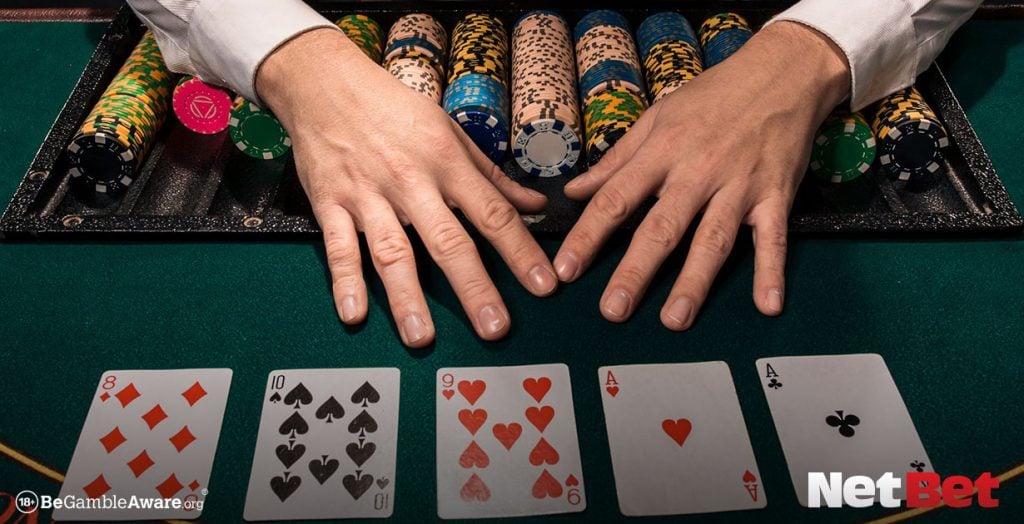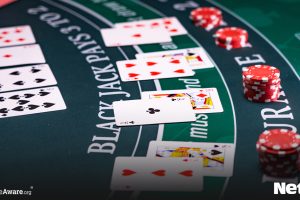
Blackjack is one of the most popular casino games in the world. One reason for this is probably the simplicity of the game, which allows newbies to pick up the rules and start playing within minutes. However, before playing live blackjack, it’s important to learn some of the blackjack hand signals. Doing this will help you to fit in with the seasoned gamblers and make it look like you know what you’re doing – even if you’re just winging it! Below, we explore some of the common blackjack hand signals and their meaning. Keep reading to find out more!
Blackjack hand signals vary depending on whether you’re playing a face-up or a face-down game. In a face-up game, cards are dealt face-up onto the table, so your hands are free. However, in a face-down game, you’ll be holding the cards in your hands and the hand signals will be slightly different.
Face-down blackjack hand signals
- Hit – first up, let’s discuss hit. For anyone unsure, a hit is when you request another card from the dealer. The hand signal for this request when holding your cards is to scrape them on the table.
- Stand – next, we’ve got stand. This is when you want to stick with your cards rather than requesting a new one. The signal for this to move your cards beneath your chips.
- Double down – this is when you double your initial bet and request one more card from the dealer. This means that you have two initial cards and an additional card from the dealer. The blackjack hand signal for this is to place extra chips next to your initial bet. The only difference between the face-down and the face-up variant is that in a face-down game you’ll need to turn your cards face-up before placing the bet.
- Split a pair – splitting a pair is when you split the initial two cards you are given, but only if they have the same value. If you’ve got two cards with the same value that you’d like to split, place an additional bet in an area separate from the original betting box. Once you’ve done that, the dealer will split the pair with separated bets to create two different hands. The blackjack hand signal for this is to put more chips next to your initial bet, but from outside the betting area. The only difference between the face-down and the face-up variant is that in a face-down game you’ll need to turn your cards face-up before placing the bet.
- Surrender – surrendering in blackjack is when you give up your hand after the initial deal if you feel you have little chance of winning the hand. You can usually then keep half your bet, rather than lose the entire thing. To surrender in a face-down game, draw an imaginary straight line with your index finger.
Face-up blackjack hand signals
- Hit – in face-up blackjack, the hand signal for hit is to tap the table with your finger or wave your hand towards yourself.
- Stand – the blackjack hand signal for stand in a face-up game is to wave your hand over your cards.
- Double down – in face-up blackjack, place the chips you want to bet outside the betting box beside your original bet and point with one finger.
- Split a pair – to split a pair, place the chips you want to bet beside your original bet but outside of the betting box. Point with two fingers and make the shape of a V.
- Surrender – surrendering in a face-up game is the same as a face-down game, simply draw an imaginary straight line with your index finger.
Why hand signals are important

So, why are blackjack hand signals important? As well as helping you look the part, blackjack hand signals are important for both the casino and the player. The purpose of them is to make your intentions clear to the dealer which helps the game to run smoothly, as well as keeping the games fair and honest. Most brick-and-mortar casinos have cameras positioned over tables which are used to monitor games. The footage can then be looked back on if necessary.
As the cameras don’t pick up sound, blackjack hand signals are used to make the intentions clear to the casino. For instance, if you wanted to stand but the dealer made a mistake and thought you wanted to hit, the casino would be able to look back at the footage and see that it was the dealer’s mistake and not yours. Likewise, if a player attempts to cheat, hand signals can be used to prove who’s in the right.
So, there you have it – the most common hand signals and their meaning. If you’re a beginner, you may prefer to just verbally tell the dealer what you want to do until you get the hang of things. However, it’s important to use the blackjack hand gestures as much as you can. Remember that hand signals for blackjack are there to protect both you and the casino, so it’s definitely worthwhile learning how to use blackjack hand signals. Thankfully, most of them are easy to learn so it shouldn’t take you too long to get the hang of them!
If you want to use the blackjack hand signals but don’t feel 100% confident yet, tell the dealer your request verbally as well, just to make sure there are no mix-ups. That way, if the dealer is confused by your request, he can question it before making a mistake. However, after reading through this guide it shouldn’t be long before you’re using blackjack hand signals without any issues!
Want to try out the blackjack hand signals for yourself? You can do! At NetBet we have a variety of slots and live casino games for you to enjoy.



